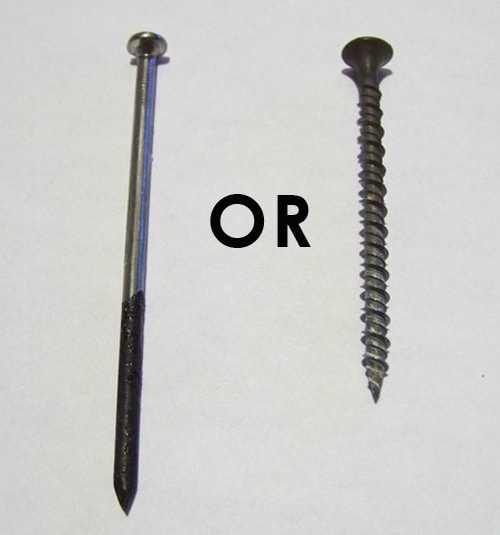When to Use Nails Instead of Screws

Nails and screws are both commonly used fasteners, but there are some key differences between the two that make one a better choice than the other in certain situations.
Strength
Nails are generally not as strong as screws, and they are more likely to bend or break under heavy loads. Screws, on the other hand, are more resistant to bending and breaking, making them a better choice for applications where strength is important.
Holding Power
Nails have less holding power than screws, and they are more likely to pull out of the material they are driven into. Screws, on the other hand, have more holding power and are less likely to pull out. This makes screws a better choice for applications where holding power is important.
Ease of Installation
Nails are generally easier to install than screws, and they do not require any special tools. Screws, on the other hand, require a screwdriver or drill to install, which can make them more difficult to install.
Cost
Nails are generally less expensive than screws, making them a more economical choice for large projects. Screws, on the other hand, are more expensive, but they may be worth the extra cost in applications where strength or holding power is important.
When to Use Nails
Nails are a good choice for applications where strength and holding power are not critical, such as:
- Attaching trim to walls
- Hanging pictures
- Installing insulation
- Securing carpet
When to Use Screws
Screws are a good choice for applications where strength and holding power are important, such as:
- Framing a house
- Building a deck
- Installing cabinets
- Attaching heavy objects to walls







